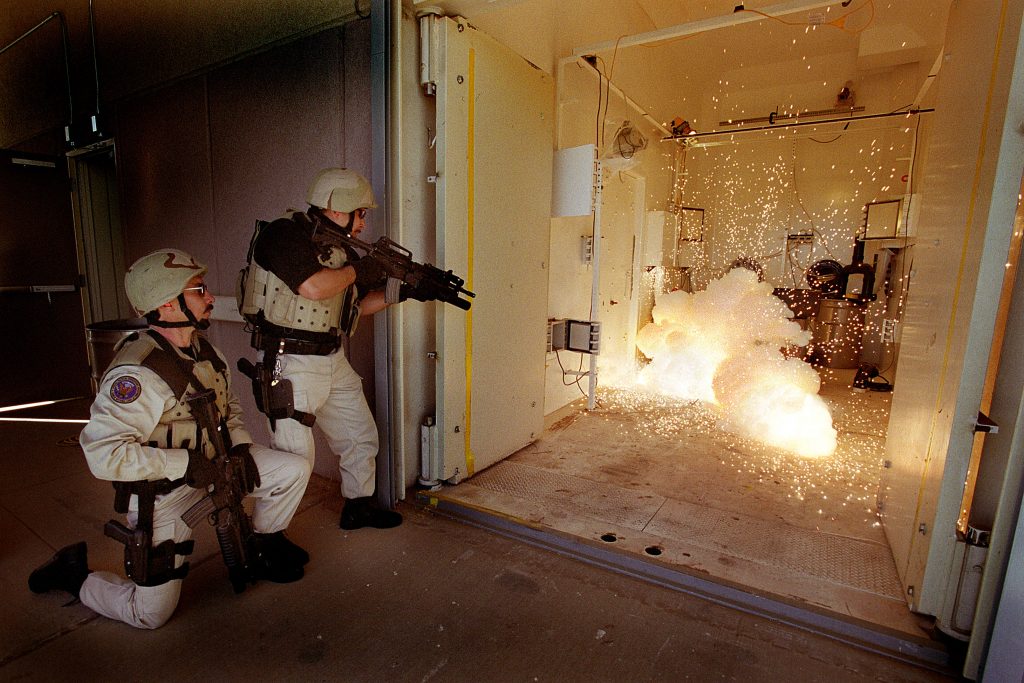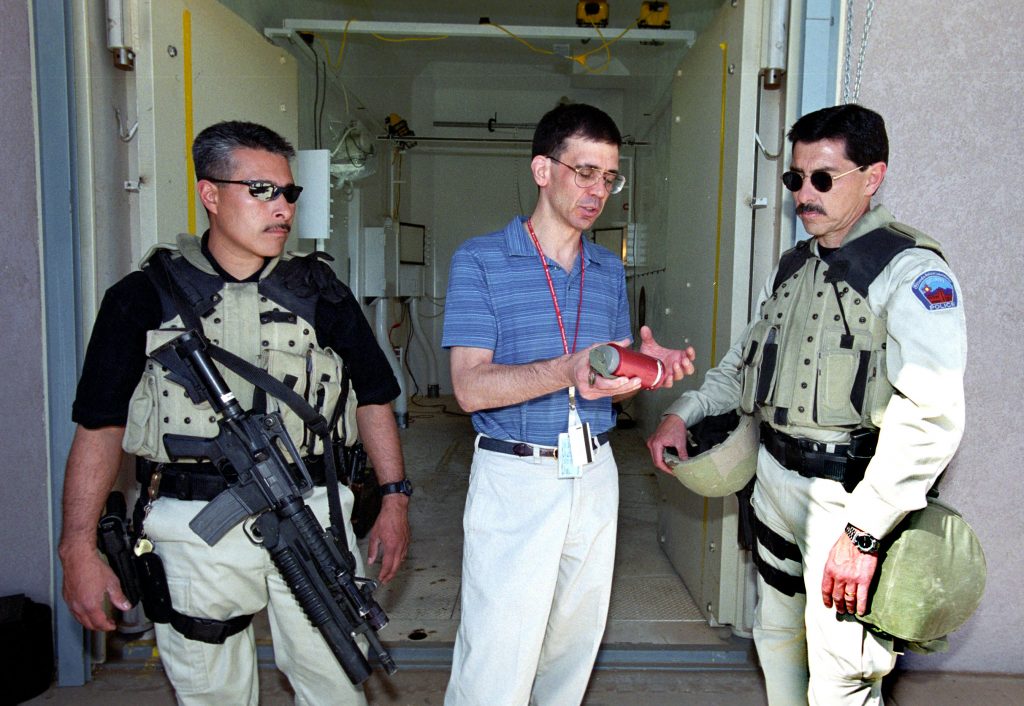
ALBUQUERQUE, N.M. — A cheaper, less dangerous way to stun kidnappers or terrorists holding hostages has been developed by Sandia National Laboratories.
The nonlethal device — about the size of a small soda can — creates a blinding, deafening, yet ultimately harmless explosion when lobbed into a room. Unlike earlier versions that ignite from concentrated materials, the explosive source in this device fans out as an airborne powder before it ignites, making it less dangerous to hostages. The stun grenade is also reusable, making it feasible as a training tool.
Developed by Sandia researcher Mark Grubelich, the device is of interest to police departments and to law enforcement officials from a variety of federal agencies.
Purpose of stun devices
Diversionary devices — also called stun grenades or flash-bangs — are used in interventions practiced by most police departments and some Washington agencies. Police break down a door or smash a window of the apartment containing the hostages and captors, and lob in the explosive device. Law enforcement officers follow with extreme rapidity, taking advantage of the general disorientation within to capture, disable or, if necessary, kill evildoers while freeing their victims. Such is the plan.

The violence within
However, most devices currently in widespread use contain a metal powder that violently combines with a salt containing oxygen. When this mixture — aluminum and potassium perchlorate — is ignited by a grenade-style fuse, an explosion takes place within the body of the device. This creates a zone of extreme pressure nearby that may be dangerous if the device lands near a hostage’s neck or head. The explosion also destroys the shell of the device containing the explosive, making such apparatuses expensive to use as training tools.
The peacock’s tail
The new device is made of plastic. It contains only metal powder and no oxidizer. No explosion takes place within the cannister. Instead of ignition within the device, the particles are forced like a burst of talcum powder out through 16 quarter-inch-diameter holes in the bottom of the structure.
The ejected particles hang momentarily in air, “flared like a peacock’s tail,” says Grubelich.
They form a sheet of metal dust about five feet in diameter before igniting by combining with oxygen present in the atmosphere. The distributed powder means that the pressure in the immediate vicinity of the exploded device is lowered to a safer level.
It also means that the cannister is undamaged and can be reloaded for a few dollars, making it easy to use as a training device.
Variations for soldiers, police, prison guards
The new configuration is also simple to adapt for a variety of law enforcement needs. Prison officials require a grenade that, if remaining whole after use, is too soft and flexible to be used as a blackjack by rioting convicts. Soldiers require a lightweight cannister that can be carried over long distances. Police can carry the cannister in their cars, so weight is not a factor, but they want no explosive material within the cannister to eliminate the possibility that any falling into the wrong hands could be restructured into a bomb.